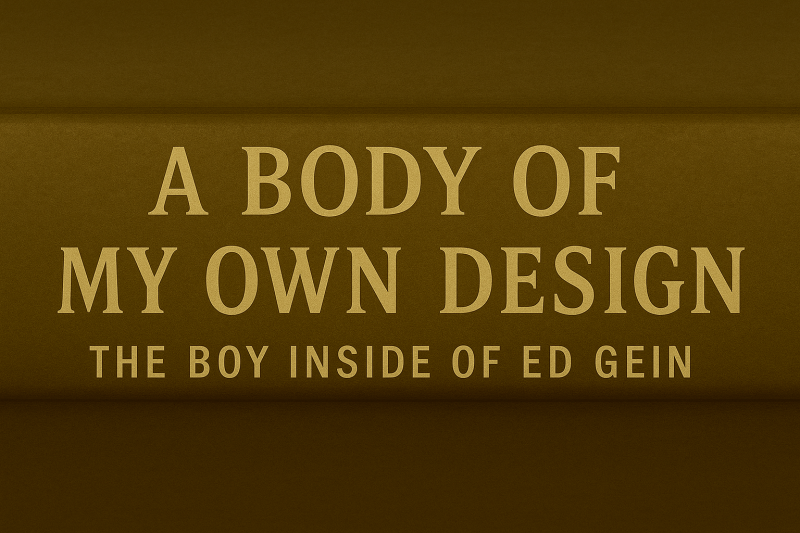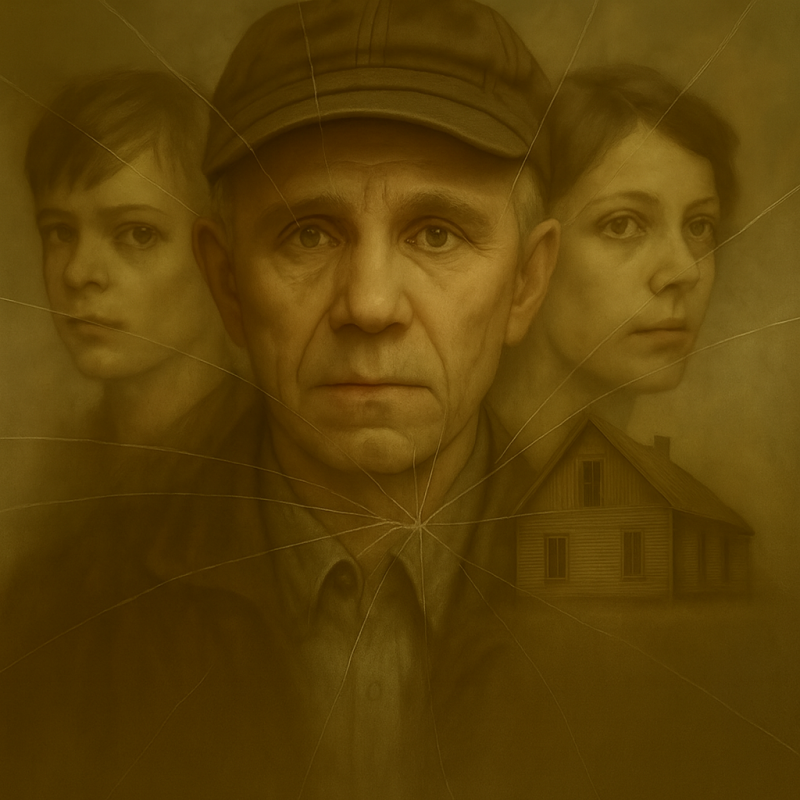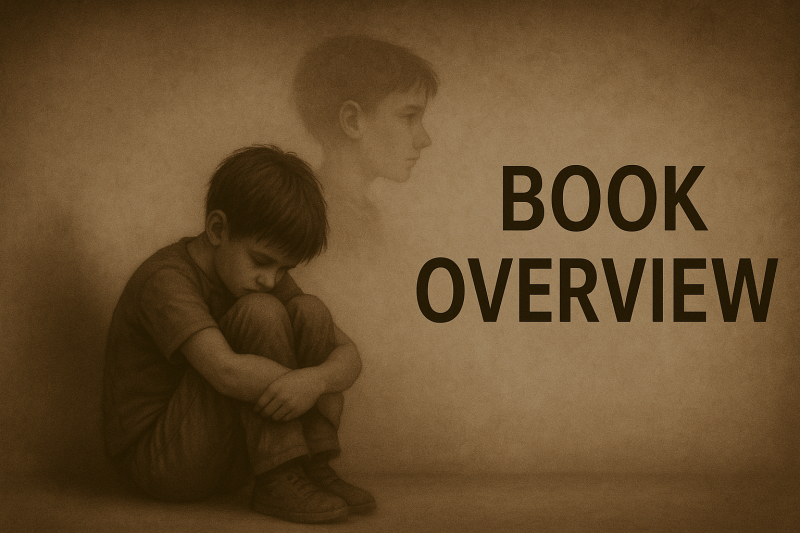
Dissociation is the common response of children to repetitive, overwhelming trauma and holds the untenable knowledge out of awareness. The losses and the emotions engendered by the assaults on soul and body cannot, however be held indefinitely. In the absence of effective restorative experiences, the reactions to trauma will find expression. As the child gets older, he will turn the rage in upon himself or act it out on others, else it all will turn into madness.
Judith Spencer, Satan's High Priest

A Body of My Own Design
The Boy Inside Ed Gein
by The Chorus
Because every monster once began as a child no one protected, and every story deserves to be told before it’s too late to listen.
Before he became a headline, Ed Gein was a boy—an innocent child trapped in a home ruled by cruelty, religion, and fear. Under the grip of his mother’s sermons and his father’s fists, his mind fractured into three: Eddie, the terrified boy who counted to survive; Ed, the obedient man who tried to please; and Evette, the hidden self—a transgender woman silenced by shame and scripture.
When Augusta died, she left behind an emptiness that consumed him. In that silence, Ed tried to build what the world denied him—a body of his own design. What history called monstrosity was, in truth, the desperate creation of a shattered soul.
Told through the haunting voices of his divided selves, A Body of My Own Design is not a story of horror, but of heartbreak—an unflinching exploration of trauma, identity, and the fragile line between survival and madness.
Prolonged childhood trauma causes the soul to fracture. During dissociation, right and wrong blur, memory splinters, and identity divides itself to keep living. The shame surrounding gender and sexual identity can deepen this fracture, leaving children at war with the very parts of themselves that once protected them.
Told through the haunting voices of his divided selves, A Body of My Own Design is not a story of horror, but of heartbreak—an unflinching exploration of trauma, identity, and the fragile line between survival and madness.
Our intent is not to justify, but to illuminate. Abuse leaves marks that reach far beyond childhood—it shapes identity, fractures the mind, and too often creates cycles of suffering that repeat silently through generations.
Because every monster was once a child who needed saving.

This book is a work of fiction inspired by real events, and it is told with compassion for a man whose life was broken by years of prolonged and unimaginable child abuse. Ed Gein’s story has long been reduced to horror and legend, but before he was a headline, he was a boy who suffered. His behaviors, though monstrous in their consequences, cannot be entirely separated from the cruelty and isolation he endured as a child.
As the author, I do not offer excuses for what happened. The pain caused by his actions is undeniable, and the families of his victims carry that burden still. My intent is not to justify, but to illuminate. Abuse leaves marks that reach far beyond childhood—it shapes identity, fractures the mind, and too often creates cycles of suffering.
This retelling is my attempt to look at Ed not only as a figure of fear, but also as a reminder of what unchecked cruelty can do to a vulnerable child. In writing, I take responsibility for shaping a narrative that dares to hold both truths at once: that harm was done and first done to him.
If this story does anything, I hope it brings awareness to the silent battles children still fight behind closed doors. May we see them sooner, hear them more clearly, and act with the compassion that might prevent another life from being lost in pain.

About the author
Being Dissociative as well as being transgender has shaped not only our personal journey, but also our understanding of the fragile and resilient nature of the human mind. We have faced the unique challenges of DID — including the misunderstandings and consequences that arise when we act in ways outside of each others awareness. As a transgender person, we have also walked the path of claiming our true selves in the face of misunderstanding and prejudice. Through prolonged therapy, support, and persistence, we have learned to honor each voice within and to move toward healing.
Our home made family, compassion, and creativity are at the heart of our recovery. These novels are both an act of storytelling and a reflection of our belief that brokenness does not mean hopelessness. Every person deserves to be seen in their full complexity, and every voice — even the quietest one — deserves to be heard
It has taken a long time to learn that being multiple has never been about brokenness. It has meant being many, with diverse interests, varied voices, and different paths that together form a whole. That’s why we chased six degrees across disciplines, why we don’t fit neatly into a single title.
Some of us were drawn to medicine and nursing, learning how the body holds what the mind cannot say. Others studied social science and child development to understand what happens when childhood isn’t safe. Another voice led him into chemical engineering, as well as biology, because the process and structure felt like a safer path. We also studied counseling psychology to find language for what we already experienced — dissociation, survival, and the way trauma shapes behavior. We’ve worked as pediatric behavioral analysts, where patience and close observation are more critical than assumptions.
All of those strands are us. We argue, banter, and comfort. That’s why our story isn’t written in just one color; it’s not just ink — it’s lived experience, professional study, and survival stitched together.
It’s also why we can look at Ed Gein and say: they were not “evil.” They were dissociative. Their crimes cannot be erased — but neither can the prolonged abuse and neglect that carved survival into them Where the world saw a monster, we saw a system that punished someone who was already broken as a child.
This isn’t an excuse. It isn’t exoneration. We attempt to write back the erased — to show how abuse echoes, how files contradict themselves, how systems sell fear because it’s easier than facing the truth.